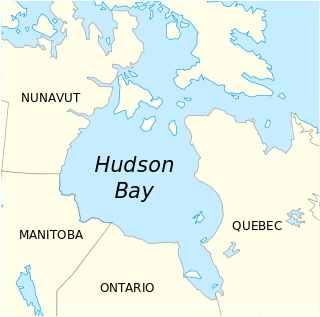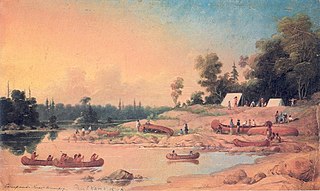| Lac des Mille Lacs | |
| Lake | |
| Name origin:French for "Lake of a thousand lakes" | |
| Country | Canada |
|---|---|
| Province | Ontario |
| Region | Northwestern Ontario |
| District | Thunder Bay |
| Tributaries | |
| - Primary Inflow | Savanne River |
| Elevation | 457 m (1,499 ft) |
| Coordinates | 48°50′57″N90°30′38″W / 48.84917°N 90.51056°W Coordinates: 48°50′57″N90°30′38″W / 48.84917°N 90.51056°W |
| Mouth | Seine River |
| - coordinates | 48°58′46″N90°43′49″W / 48.97944°N 90.73028°W |
| Length | 30 km (19 mi) |
| Width | 20 km (12 mi) |
| Basin | 1,774.55 km2 (685 sq mi) |
| Area | 245.1 km2 (95 sq mi) |
Lac des Mille Lacs is a lake in the western part of Thunder Bay District in northwestern Ontario, Canada. It is in the Nelson River drainage basin and is the source of the Seine River. The lake lies between Ontario Highway 17 on the north and Ontario Highway 11 on the south about 100 kilometres (62 mi) west of the city of Thunder Bay.

A lake is an area filled with water, localized in a basin, that is surrounded by land, apart from any river or other outlet that serves to feed or drain the lake. Lakes lie on land and are not part of the ocean, and therefore are distinct from lagoons, and are also larger and deeper than ponds, though there are no official or scientific definitions. Lakes can be contrasted with rivers or streams, which are usually flowing. Most lakes are fed and drained by rivers and streams.

Thunder Bay District is a district and census division in Northwestern Ontario in the Canadian province of Ontario. The district seat is Thunder Bay.

Northwestern Ontario is a secondary region of Northern Ontario which lies north and west of Lake Superior, and west of Hudson Bay and James Bay. It includes most of subarctic Ontario. Its western boundary is the Canadian province of Manitoba, which disputed Ontario's claim to the western part of the region. Ontario's right to Northwestern Ontario was determined by the Judicial Committee of the Privy Council in 1884 and confirmed by the Canada Act, 1889 of the Parliament of the United Kingdom. In 1912, the Parliament of Canada by the Ontario Boundaries Extension Act gave jurisdiction over the District of Patricia to Ontario, thereby extending the northern boundary of the province to Hudson Bay.
Contents
Lac des Mille Lacs has an area of 245.1 square kilometres (94.6 sq mi) and a drainage basin of 1,774.55 square kilometres (685.16 sq mi). [1] The named inflows are the Savanne River and McKay Creek at Sawmill Bay at the northeast, Joe's Creek at Baril Bay at the southwest, and Inwood Creek at the north. The only outflow, at the northwest tip of the lake, is the Seine River, which flows to Rainy Lake and eventually via the Nelson River to Hudson Bay. The lake has numerous arms, named bays and named islands.

Rainy Lake is a relatively large freshwater lake straddling the border between the United States and Canada. The Rainy River issues from the west side of the lake and is harnessed to make hydroelectricity for US and Canadian locations. The sister cities of International Falls, Minnesota, and Fort Frances, Ontario, are situated on either side of the outflow of the river from the lake. Rainy Lake and Rainy River establish part of the boundary between the US state of Minnesota and the Canadian province of Ontario.

Hudson Bay is a large body of saltwater in northeastern Canada with a surface area of 1,230,000 km2 (470,000 sq mi). It drains a very large area, about 3,861,400 km2 (1,490,900 sq mi), that includes parts of southeastern Nunavut, Saskatchewan, most of Manitoba, Ontario, Quebec and indirectly through smaller passages of water to parts of North Dakota, South Dakota, Minnesota, and Montana. Hudson Bay's southern arm is called James Bay.














